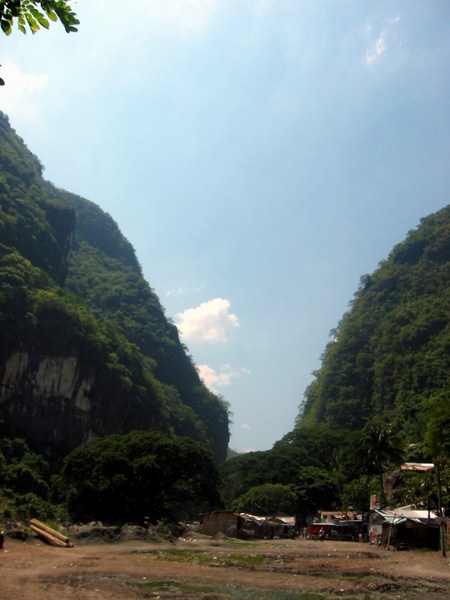After lunch at the Philippine Military Academy (PMA) cafeteria, Jandy and I again boarded our Toyota Revo and proceeded to Camp John Hay. This attractive, quiet place, with views of the surrounding hills, always offers an abundance of rest and recreation activities such as hikes along a 1.8-km. eco-trail; biking, horseback riding and kiddie rides at Scout Hill; camping, an educational tour of the Butterfly Sanctuary; and golf at its 5,330-yard, 18-hole, par-68 golf course, one of the best in the country.
| Club John Hay Golf Course |
The Camp John Hay Mile-Hi Center, a former recreation center of the Americans, offers local and exported crafts and garments. Within the CJH Commercial Mall, located at the former Administration Bldg., is the John Hay Commissary (a duty-free shop), Strumms, Dencio’s Bar and Grill, Side Bar and Nike Stadium, plus a billiards hall, business center and an internet cafe. There’s also the Camp John Hay Manor and the Camp John Hay Suites, nice places to stay within the camp.
| John Hay Manor |
A 3-hectare slice of nostalgia within the camp, called the Historical Core, my favorite spot then and now, has been set aside to preserve the camp’s timelessness and allure. Deemed inviolate to the whims and winds of change, this living museum was envisioned as more than just a window on time. It consists of the Bell Amphitheater, the History Trail, Honeymoon Lodge, Our Secret Garden, the Cemetery of Negativism and Bell House.
| Cemetery of Negativism |
Near the entrance is the Cemetery of Negativism, built during the term of camp commander Maj. John Hightower (1979-1982). A glimpse into the homespun American philosophy of living, here we strolled among the tombstones where bad habits and the scourge of productivity are buried, its touch of whimsy doing little to negate the truth of its message. Among them are the inept Kant du Nutin Wright, the defeatist Ben Trid Bfor and the notorious General Neg A. Tivism (whose epitaph reads “Died of positive reaction to enthusiasm”).
| Bell House (Camp John Hay Museum) |
The Bell House, now the Camp John Hay Museum (opened on October 25, 2003), was named after U.S. Gen. J. Franklin Bell. Initially built as the vacation home of the Commanding General, today it is the repository of artifacts and other indoor exhibits.
| Bell Amphitheater |
Personally designed by Gen. Bell who took inspiration from the Ifugao’s terracing technique, the amphitheater was once a venue for social and cultural gatherings known for its perfect acoustics. Anything said under the gazebo at the center is amplified, audible from any point within the amphitheater. Its rows of chairs have since been replaced and it is now a multi-level landscaped garden with rare flowers. The amphitheater is now available for concerts, weddings and other special occasions.
| The History Trail |
The History Trail, designed to wind its way amidst pine trees, offers landscaped resting areas. Our Secret Garden is planted to blooms that add a splash of color and scents. It also has a gazebo. The Honeymoon Cottage is rented out to newlyweds.

.jpg)














